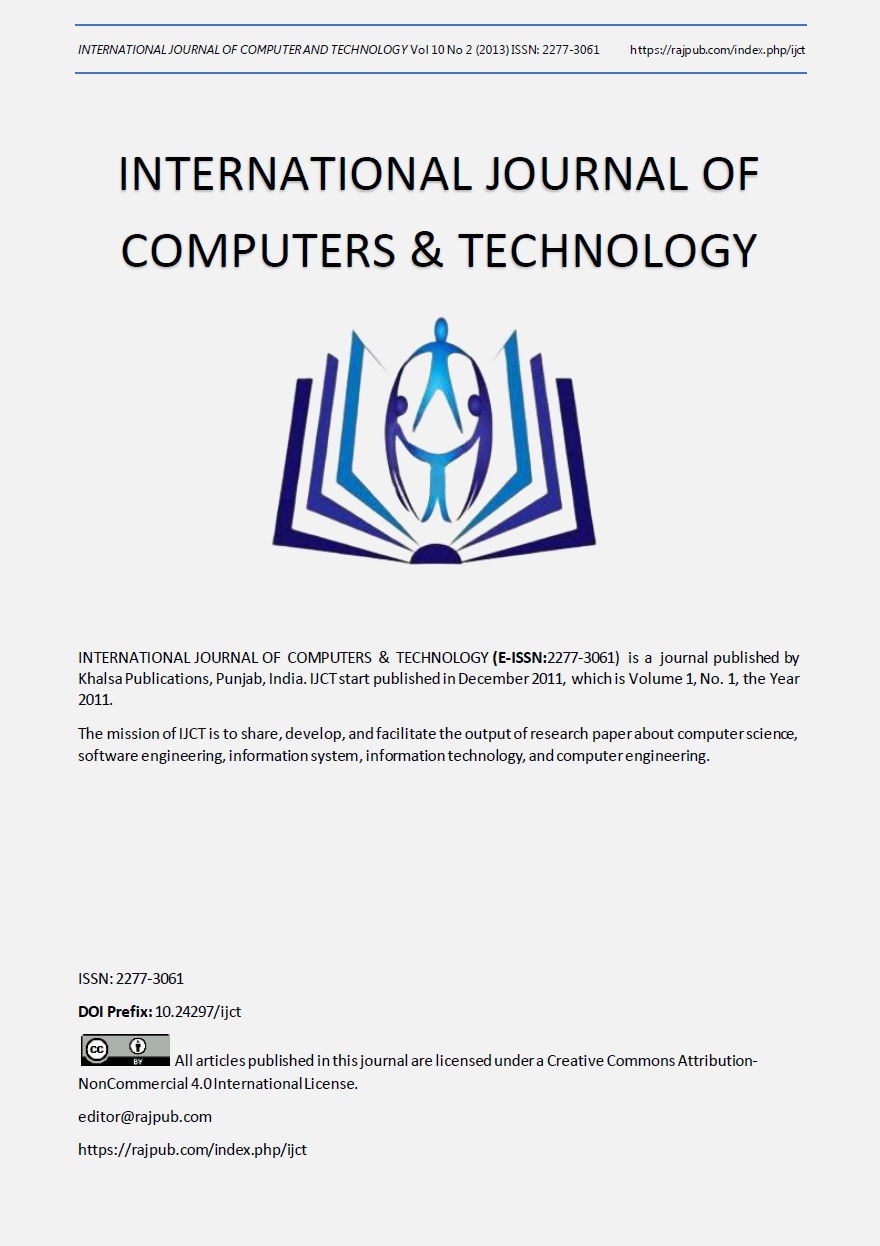Comparative Analysis of Simulation Time in Nonlinear and Harmonically Excited Pendulum and Duffing Oscillators
DOI:
https://doi.org/10.24297/ijct.v10i2.6997Keywords:
Simulation time, Nonlinear system, Harmonically excited system, Runge-Kutta schemes and Excitation periodAbstract
The motivation for the present study is derived from the fact that time mangaement is an integral part of good engineering practice. The present study investigated the quantification of the required computation time using two nonlinear and harmonically excited oscillators (Pendulum and Duffing) as case studies. Simulations with personal computer were effected for Runge-Kutta schemes (RK2, RK3, RK4, RK5, RK5M) and one blend (RKB) over thirty five thousand and ten excitation periods consisting the unsteady and steady solutions. The need for validation of the developed FORTRAN90 codes by comparing Poincare results with their conterpart from the literature informed the choice of simulation parameters. However, the simulation time was monitored at three lengths of excitation period (15000, 25000 and 35000) using the current time subroutine call command.
The validation Poincaré results obtained for all the schemes including RKB compare well with the counterpart available in the literature for both Pendulum and Duffing. The actual computation time increases with increasing order of scheme, but suffered a decrease for the blended scheme. The diffencerence in computation time required between RK5 and RK5M is negligible for all studied cases. The actual computational time for Duffing (5-33seconds) remain consistently higher for corresponding Pendulum (3-23seconds) with difference (2-10seconds). Interestingly, the quantitative difference between the corresponding normalised computation time for systems and schemes is insignificant. It is insensitive to systems and schemes and formed a simple average ratio{ } for RK2, RK3, RK4, RK5, RK5M and RKB respectively. It is concluded that the end justified the means provided that computation accuracy is assured using the higher order scheme (with higher computational time ratio).
Downloads
References
(2) Classweb (2013), Introduction to computer simulations. An article written by management science classweb downloaded from classweb.gmu.edu/aloerch/ simulations540.pdf on 20th July, 2013 at 3.13 PM.
(3) Diks C., Hommes C., Panchenko V. and Weide K.V. (2008), Economics and Finance: A user friendly software package for nonlinear economics dynamics. Computer Economics, Vol. 32, pp. 221-244, Springer.
(4) Dowell E.H. (1988), Chaotic oscillations in mechanical systems, Computational Mechanics, 3, pp.199-216.
(5) Finger L. and Uhlmann H. (1994), Effective computation of the Poincaré map for the analysis of nonlinear dynamic circuits/systems using Runge-Kutta triples. Journal of circuits, systems and computers, Vol.4, Issue 1. © 2013 World Scientific Publishing.
(6) Gregory L. B. and Jerry P. G. (1990), Chaotic dynamics: An Introduction, Cambridge University Press, USA, pp.3-5 & 40-75.
(7) Haecheon C. and Parviz M. (1994), Effects of the computational time step on numerical solutions of turbulent flow. Elsevier Journal of Computational Physics.Vol.113, Issue 1, pp.1-4.
(8) Ivana K., Michael J.B. and Asok K.M. (2011), Forced vibration of a Duffing oscillator with different damping mechanisms. Wiley online library. DOI: 10.1002/9780470977859.Ch6. © 2011 John Wiley and Sons Ltd.
(9) Jian Z. and Huazhong T. (2013), Runge-Kutta discontinuous Galerkin methods with WENO limiter for the special relativistic hydrodynamics. Journal of computational physics , Vol.242, pp. 138-168. Academic Press Professional, Inc., San Diego , CA ,USA.
(10) Liang Y. and Feeny B.F. (2008), Parametric identification of a chaotic based excited double pendulum experiment. Springer Journal of Nonlinear Dynamics, Vol. 52, pp. 181-197. © Springer Science + Business Media, Inc.
(11) Ludovic N., Laurent S., Jean P.P. and Jérome B. (2002), Automatic time algorithms for implicit numerical simulations of nonlinear dynamics. Advances in Engineering Software: Engineering computational Technology, Vol. 33, Issue 7-10, pp. 589-603, Elsevier Science Ltd., UK.
(12) Murugesh V., Murugesan K. and Kim K. (2011), Simulation of nonlinear singular system using RK-Bucther Algorithm. ICHIT 2011, CCIS 206, pp.625-632.© Springer-Verlag Berlin Heidelberg 2011
(13) Mustafa M., Mada S.W.S and Dian S.M. (2013), Numerical simulation of chaotic synchronization of Chua circuit and its applications for secure communications. Applied Mathematical Sciences, Vol. 7, No. 1, pp.1-10.
(14) Nikolaos S. (2009), An algorithm using Runge-Kutta methods of orders 4 and 5 for systems of ODEs. International Journal of Numerical Methods and Applications, Vol.2, No.1,pp. 47-57. © 2009 Pushpa Publishing House.
(15) Salau T.A.O. and Ajide O.O. (2012), Comparative analysis of time steps distribution in Runge-Kutta algorithms. International Journal of Scientific and Engineering Research (IJSER). Vol. 3, Issue1, pp.1-5. ISSN 2229-5518.
(16) Salau T.A.O. and Ajide O.O. (2013), A novel graphic presentation and fractal characterization of Poincaré solutions of harmonically excited pendulum. International Journal of Advances in Engineering and Technology (IJAET), Vol.6, Issue 3, pp. 1299-1312.
(17) Salau T.A.O. and Ajide O.O.(2013), Runge-Kutta schemes coefficient simulation for comparison and visual effects. SCIRP Engineering Journal, Vol.5, No.5, pp. 530-536.Scintific Research, USA
(18) Seth P. (2013), Improving simulation performance in simulink. © 1994-2013 The Mathworks Inc.
(19) Siddhartha K.K. and James D.M. (2008), Multifractal solver for online power system time-domain simulation. IEEE Transactions on power systems, Vol. 23, No. 4, pp. 1727-1737.
(20) Steven C. C. and Raymond P. C. (2006), Numerical methods for engineers, Fifth edition, McGraw-Hill (International edition), New York, ISBN 007-124429-8.
(21) Wang J. (2013), He’s Max-Min approach for coupled cubic nonlinear equations arising in packaging system. Hindawi Journal: Mathematical problems in Engineering, Vol. 2013, 4 pages. Article ID: 382509









